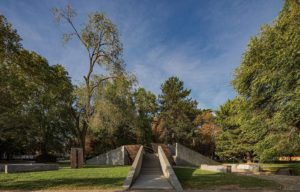You are all invited to an exceptional flashback: in just one hundred kilometers, Valcamonica and Lake Iseo enclose thousands of years of history in its most fervid moments.
Valcamonica is known throughout the world, and not just in the world of specialists, as one of the sacred places of prehistory. Thousands of rock engravings on stones smoothed by glaciers tell the story of the life, the hunting activities and the geography of an Alpine valley with a focus on the Bronze and Iron Ages, from the third millennium to the year zero, but with beginnings going much further back in time, to the end of the last glacial period. Migrating peoples began to find stability and stopped wandering from place to place, from gatherers they became hunters and then farmers. They probably had no enemies, being settled in an inaccessible valley. The Pax Romana brought their extermination and until the year 1000 there was no more mention of them.
The Middle Ages witnessed a new birth of civilization, and therefore art, sculpture, frescoes in fourteenth- and fifteenth-century parish churches, then the Renaissance with Girolamo Romanino, who frescoed Pisogne, Bienno, Breno and Borno. Today they can all be visited. As is often the case in the valleys, wooden sculpture, such as the Via Crucis by Beniamino Simoni or the Lamentation of Christ, and paintings were executed for the churches.
The nineteenth and twentieth centuries were dominated by Don Bosco, Don Orione and Mother Teresa, all holy people, but who did not provide sufficient inspiration for painting and its greens, pinks and reds. One senses that Voltaire and Rousseau never crossed the boundary of the Sebino. With some difficulty and a few exceptions, noble families or industrialists tried to buy important works, but often the grandchildren, upon the death of the de cuius, sold even the bathroom furniture if designed, for example, by Lucio Fontana.
So art sought a final line of defense, and perhaps it has succeeded. The Bulgarian-born artist Christo, under the expert guidance of Germano Celant (both of whom were shortly to die from COVID) created his most gigantic work on the lake: The Floating Piers, which cost a rumored €15 million.

Daniel Buren has recently inaugurated a work, raised on stilts, extending over the lake. Visible at night because it emits light, and visible during the day, of course, in the daylight. Visitors don’t enter the structure, they admire it from afar. Brescia is experiencing a new atmosphere with the latest artworks exhibited: Kapoor in the Pinacoteca, Pascale Marthine Tayou beneath the Castle, Mimmo Paladino invading the city with 75 large sculptures, as well as the artworks installed in the metro stations. It seems that Brescia has finally become aware of contemporary art…







